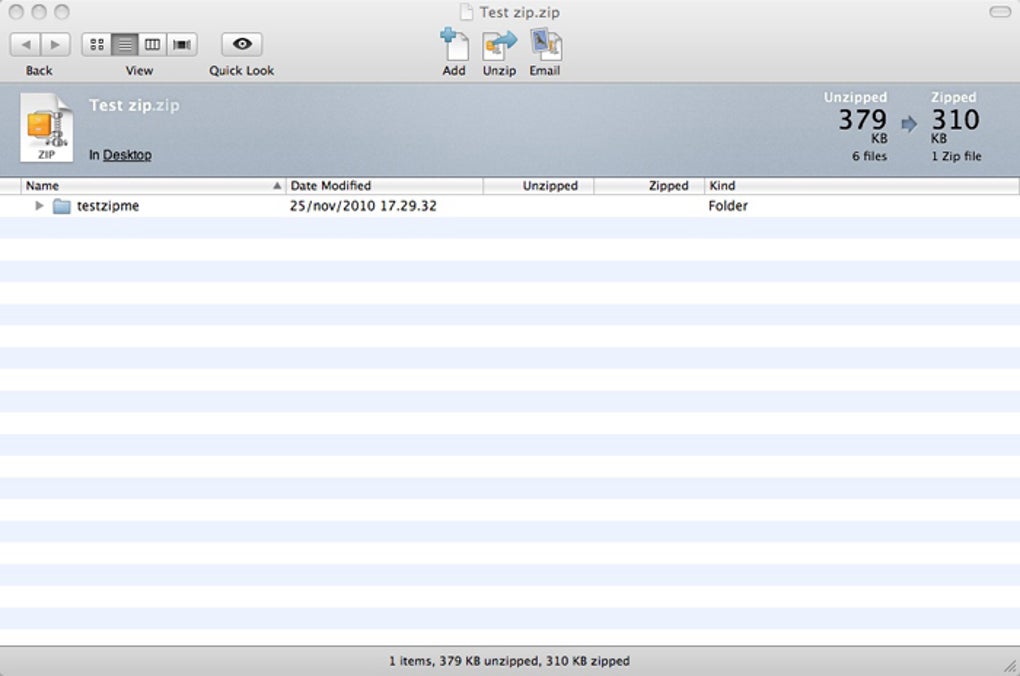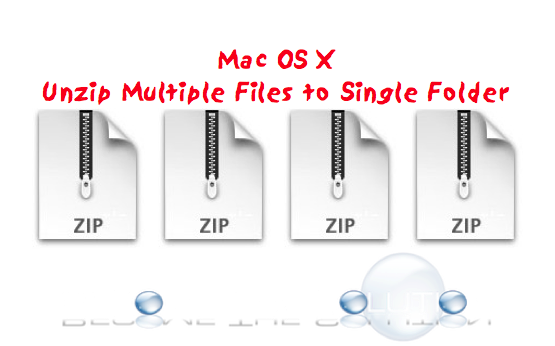

DIZ and GIF files to display ZIP archive details in your script. Suppose, 'example.txt' file is found then the script will copy 'example.txt' to "txt_files" directory and rename it to '' and will remove all the blank lines from '' and resave and will exit the loop without searching remaining entries. This script will search for ".txt" file(any file name) inside test.zip archive. Throw new Exception ( 'Unable to extract the file.' ) If ( substr ( $entry, - 1 ) = '/' ) continue // skip directories I feel dirty checking for a trailing slash.

If anyone knows a better way to determine if an entry is a directory, please chime in. That is, no sub-directories will be created. It will extract all the files in the zip and store them in a single destination directory.
BULK UNZIP WINZIP FOR MAC ZIP FILE
This function will flatten a zip file using the ZipArchive class. $errors = $zip -> extractSubdirTo ( "C:/output", "folder/subfolder/" ) Įcho "Nombre de fichiers : ". If ( $zip -> open ( "test.zip" ) = TRUE ) $relativePath, $this -> getFromIndex ( $i )) = false ) dirname ( $relativePath ), 0755, true ) If ( substr ( $filename, - 1 ) = "/" ) // Directory If ( mb_strlen ( $relativePath, "UTF-8" ) > 0 ) $relativePath = str_replace (array( "/", "\\" ), DIRECTORY_SEPARATOR, $relativePath ) $relativePath = substr ( $filename, mb_strlen ( $subdir, "UTF-8" )) If ( substr ( $filename, 0, mb_strlen ( $subdir, "UTF-8" )) = $subdir ) $filename = $this -> getNameIndex ( $i ) With the following method it is possible: The extractTo() method does not offer any parameter to allow extracting files and folders recursively from another (parent) folder inside the ZIP archive.
BULK UNZIP WINZIP FOR MAC CODE
Terminal will then spit out a few lines of code indicating that your zip file has been unzipped and the files within the folder should now be available on your desktop.Getting Started Introduction A simple tutorial Language Reference Basic syntax Types Variables Constants Expressions Operators Control Structures Functions Classes and Objects Namespaces Errors Exceptions Generators Attributes References Explained Predefined Variables Predefined Exceptions Predefined Interfaces and Classes Context options and parameters Supported Protocols and Wrappers Security Introduction General considerations Installed as CGI binary Installed as an Apache module Session Security Filesystem Security Database Security Error Reporting User Submitted Data Hiding PHP Keeping Current Features HTTP authentication with PHP Cookies Sessions Dealing with XForms Handling file uploads Using remote files Connection handling Persistent Database Connections Command line usage Garbage Collection DTrace Dynamic Tracing Function Reference Affecting PHP's Behaviour Audio Formats Manipulation Authentication Services Command Line Specific Extensions Compression and Archive Extensions Cryptography Extensions Database Extensions Date and Time Related Extensions File System Related Extensions Human Language and Character Encoding Support Image Processing and Generation Mail Related Extensions Mathematical Extensions Non-Text MIME Output Process Control Extensions Other Basic Extensions Other Services Search Engine Extensions Server Specific Extensions Session Extensions Text Processing Variable and Type Related Extensions Web Services Windows Only Extensions XML Manipulation GUI Extensions Keyboard Shortcuts ? This help j Next menu item k Previous menu item g p Previous man page g n Next man page G Scroll to bottom g g Scroll to top g h Goto homepage g s Goto search Joshuas-MacBook-Pro-2:desktop joshuaerickson$ unzip test.zip This means to Change Directory to Desktop. Joshuas-MacBook-Pro-2:~ joshuaerickson$ cd desktop Last login: Wed Jan 28 13:47:29 on console When you have terminal open, type in the following commands. You can either search for Terminal in upper right corner or locate it in the Utilities folder, which is in the Applications folder. zip file to the desktop, it will make it easier to find your.

Windows/PC users: Try WinRAR should a workaround be needed to unzip a folder! Step 1- Move. You can also access it by searching for Terminal in OSX's search function, located in the top right part of the screen within the Finder. It is located in the Utilities folder within the Applications folder. Terminal is an application that provides provides text-based access to the operating system, in contrast to the mostly graphical nature of the user experience of OS X, by providing a command lined interface to the operating system.


 0 kommentar(er)
0 kommentar(er)
